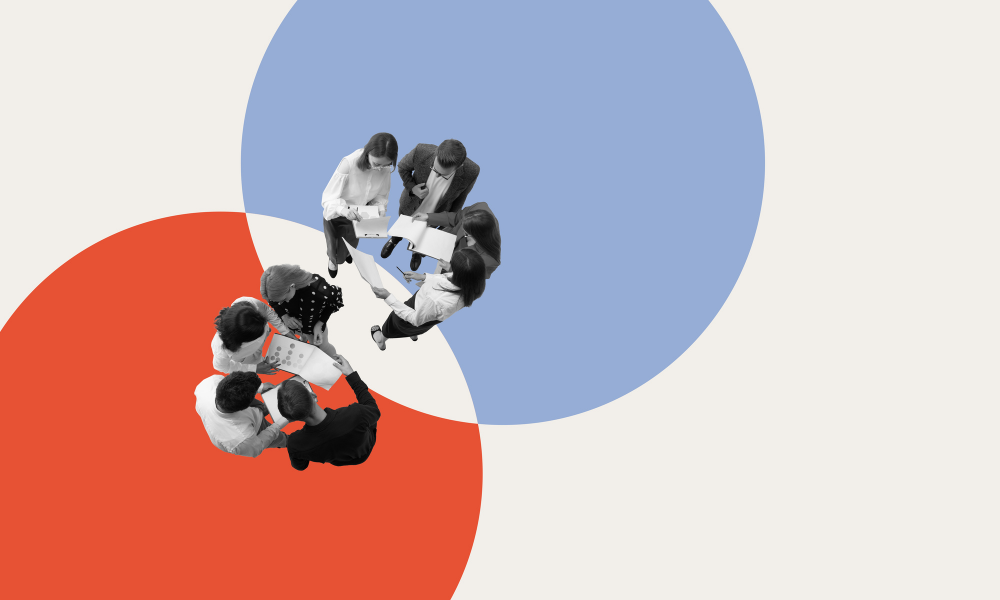Lydia de Guzman didn’t plan to spend the better part of her legal career at Manulife. In fact, she told her first interviewer that her role there might be short-lived. He hired her anyway. That supposed four-week stint turned into a decade – and counting.
Now leading the group benefits legal team, de Guzman oversees a unit that’s doubled in size under her leadership and supports over three million Canadians and 28,000 employers. “It’s a great team,” she says. “Incredibly enthusiastic… a really great attitude and willingness to take up any challenge.” The team operates like an in-house law firm, covering the spectrum of issues that arise across the insurance giant’s group benefits line. That reach demands versatility. “The challenges… can be wide and varied, and the team’s ready to take on any questions to deal with that,” she says.
What makes her trajectory notable isn’t just its longevity – it’s how it began. Articling at Fasken’s Ottawa office, de Guzman thought her career was heading for the courtroom. “I’d bought the robes, they’re still in the closet, never been worn,” she jokes. But when litigation opportunities didn’t materialize, she took what was supposed to be a temporary role as a business consultant at Manulife. She’d be gone soon, she thought. Instead, the work she did created a need for additional legal support. “I was asked to join the legal team here, supporting the business I had been a part of. And now it’s 10 years later,” she says.
A defining feature of de Guzman’s in-house journey is mentorship – both the receiving and giving of it. She credits her early mentors at Manulife for investing in her learning even when she wasn’t formally part of their team. These days, she views mentorship less as top-down instruction and more as a challenge and collaboration. “I’ve also found there’s a lot of peer mentorship that starts to come out,” she says. For her team, she tries to create space for honest conversations, encourage aspirational goals, and normalize discomfort as a prerequisite for growth. “You only grow in that bit of discomfort,” she says.
That comfort with discomfort is necessary in a department that sits at the intersection of legal, tech, regulation, and customer experience. On the regulatory side, she points to trends in privacy, AI, and data governance that are reshaping how companies interact with both customers and regulators. “The regulators are … always up for a refresh,” she says. “It always gives us more to do.”
But more work doesn’t always mean more people. As Manulife integrates artificial intelligence across its systems, the legal team’s challenge is keeping pace – not just with innovation, but with the risks that come with it. “There’s an expectation… that there is AI to be leveraged… that shouldn’t be something that is secondary,” she says. Internally, AI shows up in tools that help streamline work. Manulife’s internal compliance, risk and information security teams help her team balance innovation with the proper checks and balances.
The pandemic didn’t significantly shift the core of the work, but it did accelerate customer expectations. “We were able to make incredible things happen in a bit of a crisis moment,” she says. “Now there’s a knowledge and understanding that we can do that… that maybe has levelled up a little bit since the pandemic.” Litigation, too, has evolved, now leaning heavily on virtual platforms, affecting everything from discovery to settlement negotiations.
Her department, though leaner than one might expect, benefits from the scale of the broader Manulife legal network. “We have some legal teams, such as mine, that’s focused on a business area… and we also have some great centres of excellence,” she explained. The ability to collaborate across legal and compliance departments, globally and locally, allows the team to stay nimble. “You have folks that you can call within the organization… and they already have a fundamental understanding of the organization,” she says.
That kind of internal cohesion becomes vital when legal needs overlap with business objectives. For example, when Manulife introduced a new health platform, legal was brought in early to help shape the experience – not just vet it. “Have you considered what needs to be disclosed… how the consent is going to appear?” she asked at the time. It’s about being part of the solution from the beginning, not just auditing it after the fact.
Legal visibility within the organization is something she’s actively working on improving. After a recent survey of internal clients, her team learned that some colleagues – particularly in sales – felt legal’s value wasn’t being highlighted enough. “We know you do [good work], but we’re not seeing it,” they told her team. That feedback has already shaped her next steps. “I think we’re going to look to highlight that more,” she says.
Still, she admits there are limits to what internal legal can – and should – handle. Outside counsel is brought in only when the work requires specific expertise that doesn’t exist within the group. “It’s a rarity,” she says. “It would be more ad hoc.”
For lawyers considering the in-house route, de Guzman makes no grand sales pitch. But she’s clear about what makes it meaningful. “I’ve always loved team sports,” she says. “I really think in-house… is a bit of a team sport effort.” There’s a satisfaction, she says, in delivering something tangible – being embedded in the team that brings an idea from discussion to execution. “You get to be a part of that process,” she says. “You get to see what that can result in.”
And in a role where no two days are the same, that dynamism is part of the draw. “It’s a little bit of a different adventure every single day,” she says. “It is never boring.”





